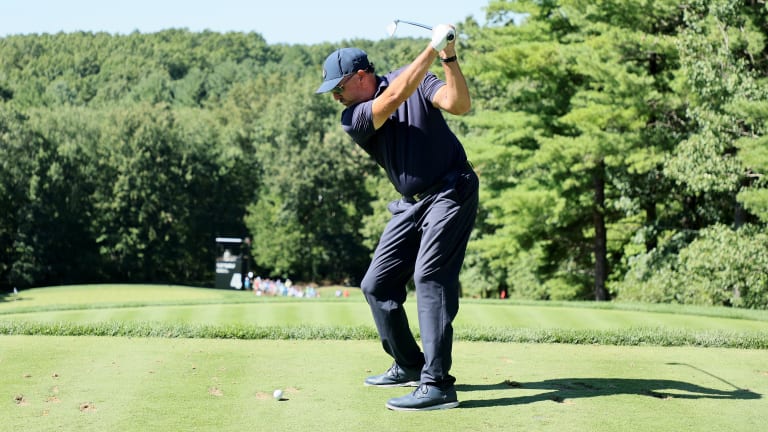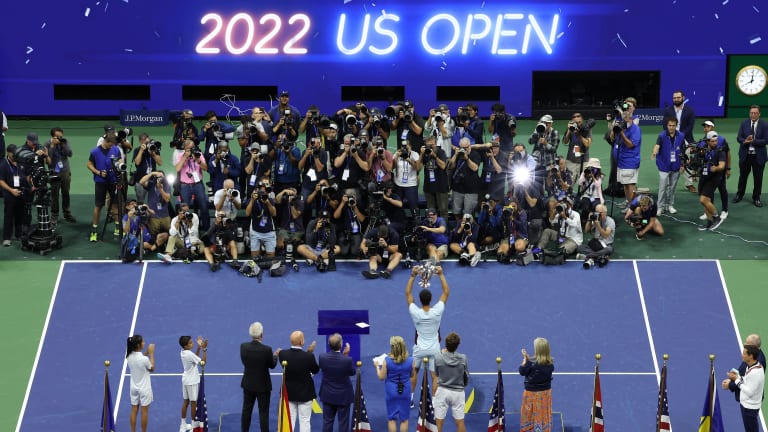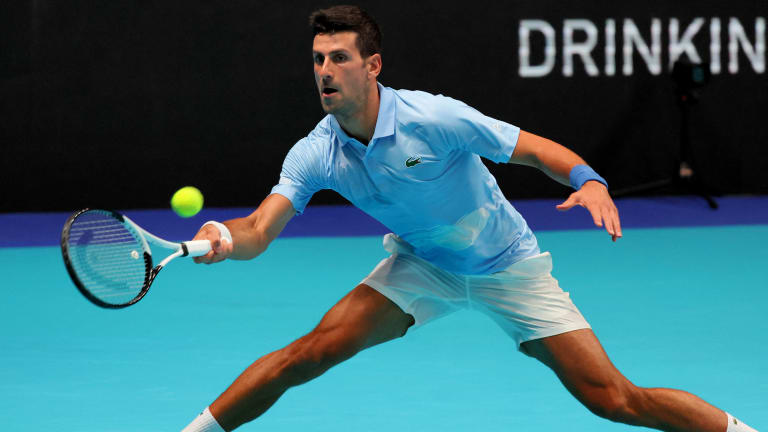The Business of Tennis
Is tennis ripe for a "LIV Golf"-style takeover?
By Sep 30, 2022The Business of Tennis
Charleston Open will pay women same as men starting in 2026
By Apr 06, 2025The Business of Tennis
Top ATP, WTA players pen letter to Grand Slams seeking greater share of revenue
By Apr 04, 2025The Business of Tennis
Chairman Andrea Gaudenzi will take over as interim ATP CEO after Massimo Calvelli departs
By Apr 04, 2025The Business of Tennis
Novak Djokovic, Coco Gauff and other players ask Grand Slam tournaments for more money and more say
By Apr 03, 2025The Business of Tennis
Wimbledon plans to upgrade the fans' favorite hill for 150th anniversary
By Apr 03, 2025The Business of Tennis
Tennis star Coco Gauff launches own management firm
By Apr 03, 2025The Business of Tennis
Carlos Alcaraz doesn't support the lawsuit from tennis players' group Novak Djokovic founded
By Mar 19, 2025The Business of Tennis
Why did Novak Djokovic's players' association sue the groups that run tennis, and what do they want?
By Mar 19, 2025The Business of Tennis
PTPA, a players' group founded by Novak Djokovic, files antitrust suit against tennis organizers
By Mar 18, 2025The Business of Tennis
Is tennis ripe for a "LIV Golf"-style takeover?
Few thought the rival league would pose a viable threat to the PGA Tour; is a similar rebellion possible in tennis?
Published Sep 30, 2022
Advertising
Advertising

Phil Mickelson's defection from the PGA Tour to LIV Tour sent shockwaves through the sports world, the ripple effects of which are still being felt.
© Getty Images
Advertising
Advertising

The US Open and other Grand Slam tournaments offer a disproportionate amount of prize money compared to tour events.
© Getty Images
Advertising

Novak Djokovic has been a vocal proponent of the status quo in tennis and heads the PTPA.
© AFP via Getty Images